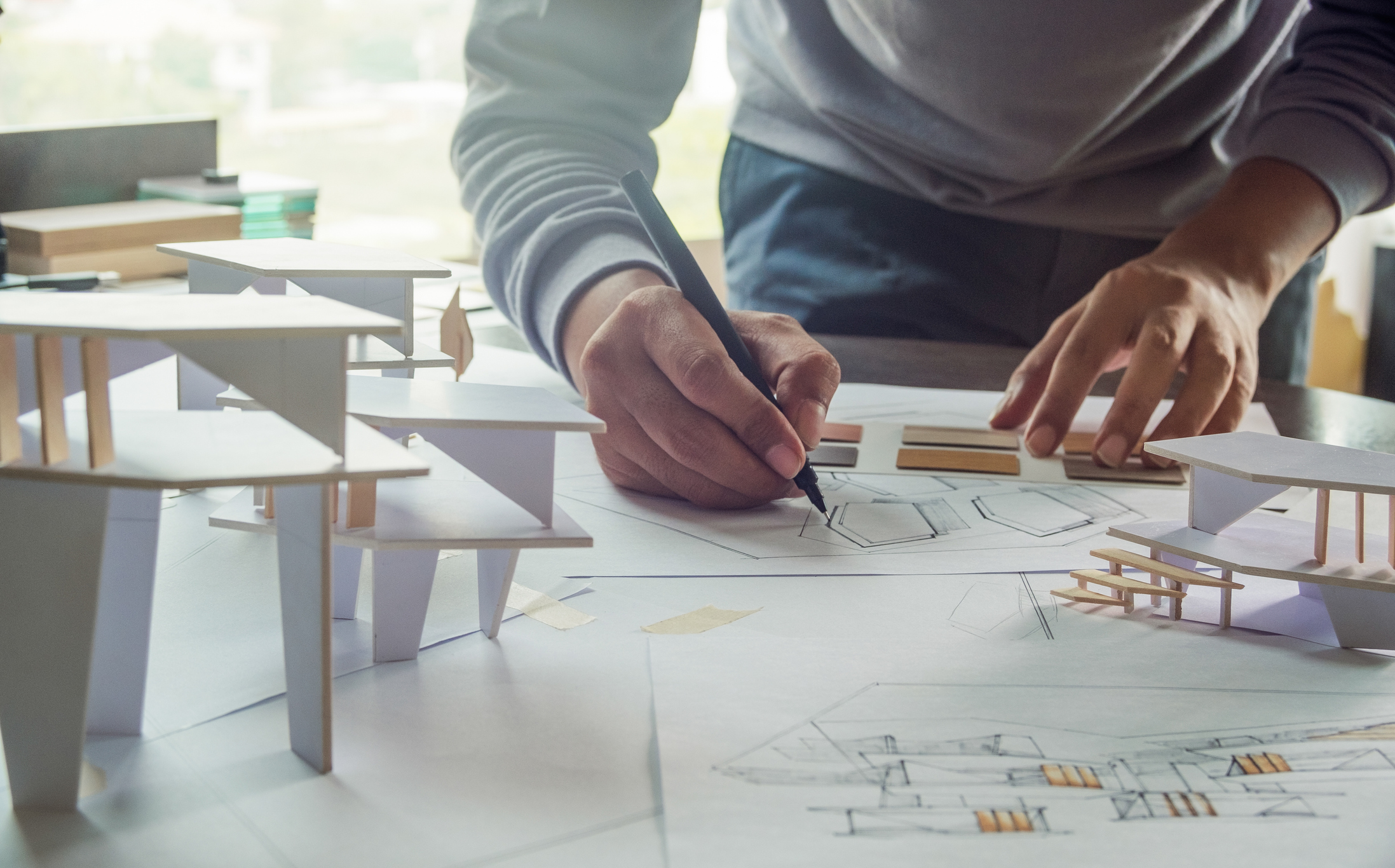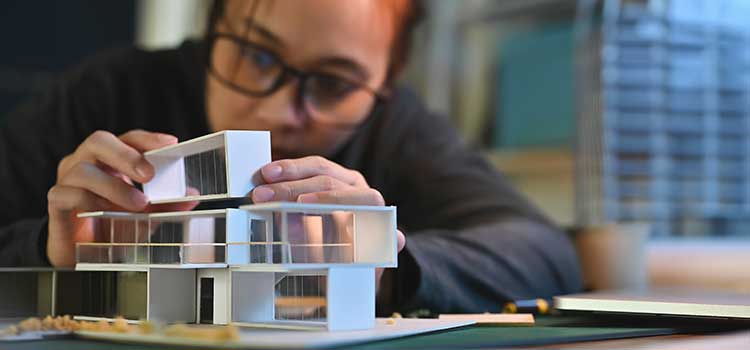Architect Services Clarified: What to Expect from Start to Finish
Architect Services Clarified: What to Expect from Start to Finish
Blog Article
Recognizing the Diverse Profession Paths Available for Aspiring Architect
As an aspiring Architect, you have a globe of career paths waiting for you. Each course uses unique difficulties and opportunities to use your imagination and technological expertise. Whether you're attracted to typical style or the subtleties of lasting style, there's a particular niche that lines up with your rate of interests. Recognizing these diverse choices can form your specialist trip, yet which direction will you pick to discover first?
Traditional Design: Designing Buildings and Structures
Traditional style concentrates on creating buildings and structures that blend functionality with aesthetic appeal. As you explore this area, you'll appreciate the detailed equilibrium in between form and purpose. You'll find out to attract inspiration from historical designs, incorporating aspects like proportion, products, and workmanship. Your styles can mirror social heritage, showcasing neighborhood traditions while satisfying modern demands.
You'll create abilities in preparing, model-making, and website evaluation, permitting you to imagine and communicate your ideas successfully. Involving with customers, you'll need to recognize their vision and translate it into possible styles.
Furthermore, constructing codes and sustainability practices are crucial in your job, guaranteeing your frameworks are secure and eco-friendly. As you expand in your career, you'll locate chances in household, business, or perhaps repair tasks, each offering one-of-a-kind challenges. Embracing conventional style paves the method for a fulfilling career that admires the past while forming the future.
Urban Preparation: Shaping Neighborhoods and Public Spaces
As an ambitious Architect, you can play an essential duty as a metropolitan coordinator, transforming how areas work and engage. By using community interaction approaches, you'll assure that residents have a voice fit their atmosphere. Plus, integrating sustainable layout concepts will certainly assist produce rooms that not just satisfy today's needs yet also protect the future.
Function of Urban Planners
While many could think about engineers as the single dreamers behind structures, city coordinators play a crucial duty fit the wider landscape of areas and public spaces. They assess land use, zoning laws, and neighborhood requires to develop lasting atmospheres that improve lifestyle. By working together with numerous stakeholders, you'll aid make parks, transportation systems, and houses that advertise social communication and availability. Urban planners additionally concentrate on environmental considerations, ensuring that developments integrate environment-friendly areas and support biodiversity. Your knowledge in spatial style and community characteristics allows you to visualize future development while protecting social heritage. In this crucial role, you'll directly affect how people experience their surroundings, making every task a possibility for favorable modification.
Community Involvement Approaches
Reliable community engagement methods are crucial for city coordinators to guarantee that the voices of citizens are heard and valued in the preparation procedure. To promote purposeful dialogue, you should prioritize open discussion forums and workshops where area members can reveal their concepts and worries. By actively listening and integrating responses, you'll create rooms that show the area's needs, eventually leading to more lasting and effective metropolitan environments.
Lasting Design Principles
When creating city rooms, including lasting style principles is crucial for producing atmospheres that flourish both ecologically and socially. Take into consideration incorporating green areas, like parks and yards, to improve biodiversity and boost air quality.
Designing with water conservation in mind is also essential-- consider rainfall yards and absorptive surfaces to take care of stormwater. Involving area participants throughout the planning process assurances that the spaces you produce fulfill their requirements and motivate social interaction. By embracing these principles, you'll add to lively, lasting urban landscapes that benefit everyone.

Landscape Style: Creating Lasting Exterior Settings
As you check out landscape design, you'll discover important style concepts that create functional and lovely outdoor spaces. Lasting practices play an important duty in ensuring these atmospheres thrive while minimizing ecological impact. Plus, you'll find a selection of career chances that permit you to make a real distinction in exactly how individuals communicate with nature.
Design Concepts in Landscape
Recognizing design principles in landscape architecture is vital for creating lasting exterior settings that harmonize with nature. You'll need to consider elements like proportion, equilibrium, and scale to guarantee your designs really feel cohesive and welcoming. Integrating native plants not just boosts biodiversity yet likewise reduces water use, making your landscape durable. Think regarding the flow of area and exactly how people engage with it; paths and seating locations need to welcome expedition and leisure. In addition, take notice of seasonal modifications, designing with materials that complement the more info environments year-round (Architect). By prioritizing sustainability and looks, you can produce outside rooms that improve the community and promote health. Welcoming these concepts will set a solid structure for your profession in landscape architecture.
Lasting Practices Review
Sustainable methods in landscape design not get more info just concentrate on appearances but additionally prioritize ecological health and wellness and source conservation. You can make areas that advertise soil wellness, such as exercising and using organic products permaculture concepts. Ultimately, these techniques ensure your designs profit both people and the atmosphere for years to come.
Profession Opportunities Expedition
With a strong foundation in sustainable techniques, landscape design uses a range of career paths that permit you to make a meaningful effect on the environment. Urban organizers usually work together with landscape designers to develop green spaces in metropolitan setups, enhancing city livability. If you're enthusiastic concerning education and learning, take into consideration becoming a landscape architecture educator, inspiring future generations.
Lasting Style: Concentrating On Eco-Friendly Practices
As you explore your job in style, embracing green practices can set you apart in an affordable field. Sustainable layout concentrates on producing buildings that minimize ecological impact while boosting owner health. By including eco-friendly materials, energy-efficient systems, and sustainable structure techniques, you'll contribute to a greener future.
Start by gaining knowledge of eco-friendly certifications like LEED or BREEAM, which can bolster your credentials. Consider exactly how natural light, air flow, and thermal effectiveness can maximize style. Work together with engineers and ecological professionals to innovate services that lower waste and save resources.
Do not fail to remember the importance of area participation-- interesting local stakeholders can influence designs that balance with the environment. As customers significantly prioritize sustainability, your knowledge in environmentally friendly techniques will not just bring in jobs but also accomplish your passion for accountable style. Welcome this crucial aspect of the occupation, and see your job flourish.
Historic Conservation: Protecting and Recovering Cultural Heritage
While you begin on your building journey, consider the necessary role of historical preservation in keeping our cultural heritage. This field concentrates on the security and reconstruction of considerable structures, sites, and frameworks that inform the stories of our past. By taking part in historic preservation, you'll help secure the architectural heritage that shapes area identity.
As a historic preservation Architect, you'll evaluate historic importance and examine the problem of frameworks. You'll function closely with chroniclers and conservationists to assure genuine reconstruction strategies are employed. This occupation path enables you to mix creative thinking with research, enabling you to make remedies that value original products and craftsmanship.
Your work not just adds to sustainability by reusing existing buildings but additionally fosters a sense of satisfaction within communities. Accepting this path will help you become a guardian of history, protecting the stories and aesthetics that enrich our lives.
Inside Architecture: Enhancing Indoor Spaces
Historical conservation and indoor architecture both share a dedication to enhancing the constructed environment, but they concentrate on various facets. While historic conservation emphasizes keeping a structure's historical and social worth, interior style nos in on more info enhancing interior areas for performance and looks.
As an ambitious Architect, you'll discover that indoor architecture allows you to mix imagination with technical abilities. You'll design rooms that not only look good yet also advertise convenience and efficiency. This field involves comprehending exactly how light, color, and materials interact within a room, impacting mood and usability.
You'll work on various projects, from property homes to industrial offices, guaranteeing that each environment satisfies the requirements of its passengers. By focusing on individual experience, you can change insides right into motivating and useful spaces, making a significant influence on exactly how individuals communicate with their environments. Welcome the possibility to enhance interior atmospheres and form the method individuals live and work.
Industrial Layout: Combining Capability With Visual Appeals
Industrial style plays an important role in creating products that seamlessly blend looks with performance, guaranteeing that what you use everyday is not just aesthetically attractive but likewise practical. As an aspiring Architect, you can immerse on your own in this area, concentrating on designing everything from furniture to consumer electronics. Your work involves recognizing user needs, products, and producing procedures, allowing you to create cutting-edge options that enhance everyday experiences.
In commercial design, you'll frequently collaborate with marketing professionals, engineers, and manufacturers, making sure that your designs are not only attractive but additionally practical. This job path offers a vibrant setting where imagination satisfies functionality, making it a satisfying option for architects interested in forming the products of tomorrow.
Regularly Asked Questions
What Educational Accreditations Do I Need to Become an Architect?
To come to be a designer, you'll require a specialist level in design, usually a Bachelor's or Master's. Additionally, you'll need to finish an internship and pass the Architect Enrollment Examination to exercise legitimately.
Are There Certification Requirements for Various Building Occupation Paths?
Yes, there're qualification requirements for various building courses. Architect. You'll need to pass exams, total internships, and in some cases go after specialized training, depending on your selected emphasis, like landscape design, metropolitan design, or historic preservation
What Software Application Skills Are Crucial for Designers Today?

Just How Can I Gain Practical Experience While Researching Style?
You can gain functional experience by interning at architectural companies, getting involved in layout competitions, offering for area projects, or working together with schoolmates on real-world assignments. These possibilities enhance your abilities and develop valuable links in the sector.
What Task Opportunities Exist Outside Typical Architecture Firms?
You can discover different job possibilities outside traditional architecture companies, like metropolitan planning, indoor layout, landscape design, building and construction monitoring, property development, or also duties in sustainability consulting. Each deals one-of-a-kind difficulties and incentives.
Whether you're drawn to conventional design or the nuances of lasting design, there's a specific niche that straightens with your passions.When making urban areas, incorporating lasting style principles is critical for producing environments that flourish both ecologically and socially.As you explore landscape style, you'll find essential layout concepts that develop useful and gorgeous outside areas.Understanding layout principles in landscape architecture is necessary for creating lasting outside environments that balance with nature.In commercial layout, you'll usually team up with makers, designers, and online marketers, making certain that your designs are not only attractive yet also possible.
Report this page